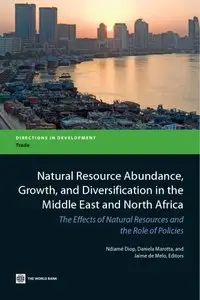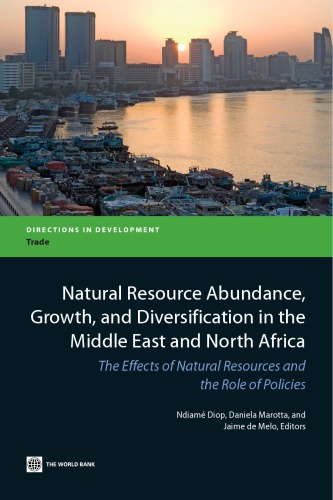Natural Resource Abundance, Growth, and Diversification in the Middle East and North Africa: The Effects of Natural Resources and the Role of Policies (Directions in Development) by Ndiame' Diop and Daniela Marotta
English | 2012 | ISBN: 0821395912 | 224 pages | PDF | 5 MB
English | 2012 | ISBN: 0821395912 | 224 pages | PDF | 5 MB
MENA is one of the richest regions in the world in terms of natural resources: it holds more than 60 percent of the world’s proven oil reserves, mostly located in the Gulf region, and nearly half of gas reserves. Oil represents 80-85 percent of merchandise exports in the region, making it highly depending on fluctuations in international prices. A long strand of economic literature has suggested that such dependence may hurt a country’s growth prospects and the scope for job creation by reducing economic diversification. This volume investigates the effect of natural resources and the role of policies on achieving higher and sustained growth through diversification away from oil. It explores analytical questions which include: (i) the impact of the real exchange rate on manufacturing and tradable services competitiveness in MENA; (ii) the role of fiscal policy in supporting diversification; (iii) how “weak links” (input sectors with low productivity) play a critical role in explaining the concentration of economic activities, in addition to the classical Dutch Disease effect and (iv) the impact of macroeconomic factors on the drive for regional integration Several policy recommendations emerge from this analysis: (i) policymakers should strive to avoid real exchange rate overvaluation through consistent fiscal policies, flexible exchange rates and adequate product and factor market regulations; (ii) reforms to improve the competition and efficiency of upstream input activities are crucial for improving the performance of downstream activities and diversification in MENA (iii) a consistent and transparent fiscal policy is essential to reduce instability, build the fiscal space needed to invest in core infrastructure and human capital and create a favorable environment for diversification; (iv) while regional trade integration is desirable for political, social, cultural and economic reasons, in terms of trade liberalization, this is not the best option for resource-rich countries of the region. Policymakers should take this into account in discussing regional integration options. It is hoped that the findings of this work will be of interest to policymakers, the civil society, donors and practitioners in MENA countries and stimulate the debate of such an important topic.



